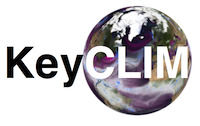We present the compatible CO2 emissions from fossil fuel (FF) burning and industry, calculated from the historical and Shared Socioeconomic Pathway (SSP) experiments of nine Earth system models (ESMs) participating in phase 6 of the Coupled Model Intercomparison Project (CMIP6). The multimodel mean FF emissions match the historical record well and are close to the data-based estimate of cumulative emissions (394 ± 59 GtC vs 400 ± 20 GtC, respectively). Only two models fall inside the observed uncertainty range; while two exceed the upper bound, five fall slightly below the lower bound, due primarily to the plateau in CO2 concentration in the 1940s. The ESMs’ diagnosed FF emission rates are consistent with those generated by the integrated assessment models (IAMs) from which the SSPs’ CO2 concentration pathways were constructed; the simpler IAMs’ emissions lie within the ESMs’ spread for seven of the eight SSP experiments, the other being only marginally lower, providing confidence in the relationship between the IAMs’ FF emission rates and concentration pathways. The ESMs require fossil fuel emissions to reduce to zero and subsequently become negative in SSP1-1.9, SSP1-2.6, SSP4-3.4, and SSP5-3.4over. We also present the ocean and land carbon cycle responses of the ESMs in the historical and SSP scenarios. The models’ ocean carbon cycle responses are in close agreement, but there is considerable spread in their land carbon cycle responses. Land-use and land-cover change emissions have a strong influence over the magnitude of diagnosed fossil fuel emissions, with the suggestion of an inverse relationship between the two.




